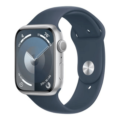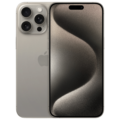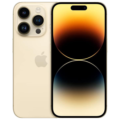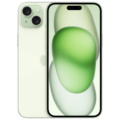- Home
- Apple Devices
- Apple iPad
- Apple iPad mini (2019) full specifications
Apple iPad mini (2019) full specifications

SPECIFICATIONS
General
| Status | Available |
| Announced |
2019, March 18 |
| Released | 18 March, 2025 |
| Model |
A2126, A2124, A2133, A2125, iPad11,1, iPad11,2 |
| Price Apple iPhone Price in USA, UK, Canada, Australia, India, Pakistan, China, Japan and Europe |
USD 492 EUR 450 |
Network
| Technology |
GSM / HSPA / LTE |
| 2G Network |
GSM 850 / 900 / 1800 / 1900 |
| 3G Network | HSDPA 850 / 900 / 1700(AWS) / 1900 / 2100 |
| 4G Network |
1, 2, 3, 4, 5, 7, 8, 11, 12, 13, 14, 17, 18, 19, 20, 21, 25, 26, 29, 30, 34, 38, 39, 40, 41, 46, 66, 71 - A2126 1, 2, 3, 4, 5, 7, 8, 11, 12, 13, 14, 17, 18, 19, 20, 21, 25, 26, 28, 29, 30, 34, 38, 39, 40, 41, 46, 66 - A2124 |
| Speed | HSPA 42.2/5.76 Mbps, LTE-A (CA) Cat16 1024/150 Mbps |
| GPRS GPRS (General Packet Radio Service) is a packet oriented mobile data service on the 2G and 3G cellular communication system's global system for mobile communications (GSM), Generally, GPRS is used for the purpose of wireless data transfer, such as sharing pictures and videos or browsing the Internet via a mobile phone connection. | |
| EDGE EDGE (Enhanced Data GSM Environment) is a wireless network technology generally considered the next step in the 2G network offers data transfer rates up to four times faster than ordinary GSM networks, Generally, EDGE is used for the purpose of wireless data transfer, such as sharing pictures and videos or browsing the Internet via a mobile phone connection. |
Body
| Dimensions | 203.2 x 134.8 x 6.1 mm (8.0 x 5.31 x 0.24 in) |
| Weight | 300.5 g (Wi-Fi) / 308.2 g (3G/LTE) (10.86 oz) |
| Colors |
Space Gray, Silver, Gold |
| SIM SIM (Subscriber Identity Module) is a small card that contains mobile network subscriber's account information. This allows the phone using the card to attach to a mobile network. The SIM card is most commonly associated with GSM and UMTS mobile networks. Moving a SIM card from one phone to another allows a subscriber to switch mobile phones without having to contact their mobile network carrier. SIM cards can also be used by a phone to store limited amounts of data, such as phone numbers and text messages. |
Nano-SIM and eSIM |
| Build | Glass front, aluminum back, aluminum frame |
Display
| Display Type Display Technology => A number of display technologies and types used in mobile phones => TFT (Thin Film Transistor), IPS (In-Place Switching), OLED (Organic Light Emitting Diode), AMOLED (Active-Matrix Organic Light-Emitting Diode), Super AMOLED (an even advanced version of AMOLED), Resistive Touchscreen (Resistive touchscreens contain two layer of conductive material with a very small gap between them which acts as a resistance), Capacitive Touchsceen (Capacitive touchscreen technology consists of a layer of glass coated with a transparent conductor) | IPS LCD |
| Size | 7.9 inches, 193.3 cm2 (~70.6% screen-to-body ratio) |
| Resolution | 1536 x 2048 pixels, 4:3 ratio |
| Pixel Density Pixel Density (PPI) is refers to the concentration of pixels on a particular display, measured in pixels per inch (ppi). Pixel density is calculated by dividing the diagonal pixel resolution of a display by its diagonal size, higher pixel density better display quality. | (~324 ppi density) |
| Touch Screen | Haptic Touch |
| Display Protection Display Protection => Gorilla Glass is a special alkali-aluminosilicate glass shield with exceptional damage resistance that helps protect mobile displays from scratches, drops, and bumps of everyday use, It is always better to go for a smartphone with Gorilla Glass for that added protection and peace of mind. | Scratch-resistant glass, oleophobic coating |
| Multitouch |
Camera
| Primary Camera is able to capture photographs and usually videos, The most important characteristics of a camera are the resolution (measured in megapixels), lens focus type (fixed or automatic), higher megapixel cameras are known to capture higher quality photos, but not always a good measurement of the photos quality. |
8 MP, f/2.4, 32mm (standard), 1.12µm, AF |
| Video | 1080p@30fps |
| Camera Features | HDR |
| Selfie Camera |
7 MP, f/2.2, 31mm (standard) |
| Video | 1080p@30fps |
| Camera Features | HDR |
Hardware
| Chipset Chipset is a group of integrated circuits designed to perform one or a more dedicated functions, often with real time computing constraints, Popular smartphones are equipped with more advanced embedded chipsets that can do many different tasks depending on their programming. | Apple A12 Bionic (7 nm) |
| CPU CPU (Central Processing Unit) mostly known as processors, CPU processes instructions in order to carry out certain functions that make your device operate properly. Processors are often described as the brain of computers, smartphones and tablets, Smartphones and tablets rely on processors to carry out their every task, Processors are an incredibly important factor in selecting any type of computing device, including your smartphone. | Hexa-core (2x2.5 GHz Vortex + 4x1.6 GHz Tempest) |
| GPU GPU (Graphics Processing Unit) is a single-chip processor designed to rapidly manipulate and alter memory to accelerate the creation of images in a frame buffer intended for output to a display, This includes things such as lighting effects, object transformations, and 3D motion. | Apple GPU (4-core graphics) |
| RAM (Memory) RAM (Random Access Memory) is a type of computer memory that can be accessed randomly, any byte of memory can be accessed without touching the preceding bytes that allows information to be stored and accessed quickly from random locations. RAM is the most common type of memory found in computer systems, smartphones, tablets and other electronic devices. | 3 GB |
| Internal Storage Internal Storage is a data storage space (flash memory) mostly used in smartphones, tablets and other electronic devices where operating system, apps, music, photos, videos, files and other user data Is stored. | 64GB/256GB |
| Card Slot Memory Card Slot is a special slot for inserting a memory card. Memory cards allow you to expand the phone's built-in memory, A memory card (sometimes called a flash memory card or a storage card) is a small storage medium used to store data such as text, pictures, audio, and video, for use on small, portable or remote computing devices such as mobile phones, mp3 players, digital cameras. | No |
| Sensors Sensors are electronic components that detects and responds to some type of input from the physical environment. The specific input could be light, heat, motion, moisture, pressure and location, The output is generally a signal that is converted to use in computing systems, a location sensor, such as a GPS receiver is able to detect current location of your electronic device. |
Fingerprint (front-mounted), compass, barometer, accelerometer, gyro |
Software
| Operating System OS => Every computer system run on a base software called Operating System (OS). Operating System controls all basic operations of the computer (such as smartphone, PDAs, tablet computers and other handheld devices). The Operating System allows the user to install and run third party applications (apps), apps are used to add new functionality to the device. | iOS 12.1.3, upgradable to iPadOS 17.4 |
| Browser (Default) | Safari |
Media
| Loudspeaker | Yes |
| 3.5mm Jack | |
| FM Radio | No |
Connectivity
| Bluetooth Bluetooth is a wireless communications technology for exchanging data between mobile phones, headsets, computers and other network devices over short distances without wires, Bluetooth technology was primarily designed to support simple wireless networking of personal consumer devices. | 5.0, A2DP, EDR |
| Infrared Infrared connectivity is an old wireless technology used to connect two electronic devices. It uses a beam of infrared light to transmit information and so requires direct line of sight and operates only at close range. | |
| Wi-fi Wi-Fi is a popular wireless networking technology using radio waves to provide high-speed network connections that allows devices to communicate without cords or cables, Wi-Fi is increasingly becoming the preferred mode of internet connectivity all over the world. | 802.11 a/b/g/n, dual-band |
| Wi-fi Hotspot | |
| USB | Lightning, USB 2.0 |
| GPS GPS The Global Positioning System is a satellite-based radio navigation system, GPS permits users to determine their position, velocity and the time 24 hours a day, in all weather, anywhere in the world, In order to locate your position, your device or GPS receiver must have a clear view of the sky. | GPS, GLONASS (Wi‑Fi + Cellular model only) |
| NFC NFC (Near field communication) is a set of standards for smartphones and similar devices to establish peer-to-peer radio communications with each other by touching them together or bringing them into proximity, usually no more than a few inches. |
Battery
| Battery Type Battery Type => Cell phones run on various kinds of batteries depending on the manufacturer, phone size or shape and features. There are basically four types of cell phone batteries => Lithium Polymer, Lithium Ion, Nickel Metal Hydride and Nickel Cadmium. | Li-Po |
| Capacity Battery Capacity is a measure (typically in Amp-hr) of the charge stored by the battery, and is determined by the mass of active material contained in the battery. The battery capacity represents the maximum amount of energy that can be extracted from the battery under certain conditions. | 5124 mAh (19.1Wh) |
| Placement | Non-removable |
| Talk Time Talk Time is the longest time that a single battery charge will last when you are constantly talking on the phone under perfect conditions, Ambient temperature and highly dependent on the cellular network environment such as the distance to the closest cell network tower. | Up to 10 h (multimedia) |
MISC
Description
The Apple iPad Mini (2019) spec, also known as the iPad Mini 5, is a remarkable tablet that combines portability, performance, and versatility in a compact design. Launched in March 2019, this device caters to users seeking a lightweight yet powerful tablet for both productivity and entertainment. With its sleek design, high-resolution Retina display, and Apple Pencil support, the iPad Mini (2019) remains a popular choice even years after its release. Let’s dive into its features, specifications, and why it continues to be relevant in 2025.
Table of Contents
Design and Build Quality

The iPad Mini (2019) is crafted with Apple’s signature minimalist design, featuring an aluminum body that feels premium and sturdy. Weighing just 300.5g for the Wi-Fi model and 308.2g for the Wi-Fi + Cellular model, it’s lightweight and easy to carry. Its slim profile, measuring 6.1 mm in thickness, makes it one of the most portable tablets available.
The tablet is available in three classic colors: Space Gray, Silver, and Gold. Its front-mounted Touch ID sensor ensures quick and secure authentication, a reliable feature for those who prioritize security.
Display: Vivid and Crisp
One of the best features of the iPad Mini (2019) is its 7.9-inch Retina display. With a resolution of 1536 x 2048 pixels and a pixel density of 324 PPI, the screen delivers sharp and vibrant visuals. The True Tone technology adjusts the display’s color temperature based on ambient lighting, ensuring comfortable viewing in any environment.
Performance: Powered by A12 Bionic

The Apple iPad Mini (2019) spec is powered by the Apple A12 Bionic chip, the same processor used in the iPhone XS series. This 7nm hexa-core processor ensures smooth performance across a wide range of tasks, from browsing and streaming to gaming and multitasking.
Paired with 3GB of RAM, the tablet handles iPadOS efficiently, offering features like split-screen multitasking and the ability to run demanding apps without lag. It’s also compatible with the latest iPadOS updates, extending its software support and functionality.
Storage Options
The iPad Mini (2019) comes in two storage configurations: 64GB and 256GB. While the lack of expandable storage might be a drawback for some, the higher storage option is sufficient for users who require more space for apps, photos, and files.
Camera Capabilities

The tablet features an 8 MP rear camera with an f/2.4 aperture and autofocus, capable of capturing decent photos and Full HD (1080p) videos at 30 fps. While it’s not designed to replace a smartphone camera, it performs well for casual photography and document scanning.
The 7 MP front camera, with an f/2.2 aperture, is great for video calls, selfies, and recording 1080p videos. Combined with the iPad Mini’s lightweight design, it’s a convenient tool for virtual meetings and online classes.
Apple Pencil Support
One of the iPad Mini (2019)’s most significant upgrades is its compatibility with the 1st-generation Apple Pencil. This feature makes it a versatile tool for creatives, students, and professionals. You can sketch, take notes, annotate documents, or create digital art with ease.
Battery Life: Reliable for All-Day Use

The iPad Mini (2019) houses a 5124mAh battery that delivers up to 10 hours of usage on a single charge. Whether you’re streaming videos, browsing the web, or working on projects, the battery life is more than sufficient for most users.
Charging is done through the Lightning port, which might feel outdated compared to the USB-C port on newer iPads. However, the charging speed remains reasonable for its size.
Connectivity and Audio
The iPad Mini (2019) offers excellent connectivity options, including dual-band Wi-Fi, Bluetooth 5.0, and optional cellular models with GPS support. This makes it suitable for users who need reliable internet access on the go.
The stereo speakers deliver clear and balanced audio, enhancing the multimedia experience. Additionally, the 3.5mm headphone jack is a welcome inclusion, catering to those who prefer wired audio devices.
Operating System and Updates
The iPad Mini (2019) launched with iOS 12.1.3 but is upgradable to the latest iPadOS versions, including iPadOS 18.2.1 as of 2025. Regular updates from Apple ensure the device remains secure and functional, making it a long-lasting investment.
Price and Value
At launch, the iPad Mini (2019) was priced at approximately €450, making it a mid-range tablet. In 2025, it remains a cost-effective option for users who prioritize portability and performance without investing in the latest models.
Verdict: Compact Excellence
The Apple iPad Mini (2019) spec is a well-rounded tablet that continues to hold its ground in 2025. Its compact design, powerful A12 Bionic chip, and Apple Pencil support make it an excellent choice for students, professionals, and casual users alike.
While it lacks some modern features, such as a USB-C port, its performance, display quality, and software support ensure it remains a reliable device for years to come. If you’re in the market for a lightweight and versatile tablet, the iPad Mini (2019) is undoubtedly worth considering.











